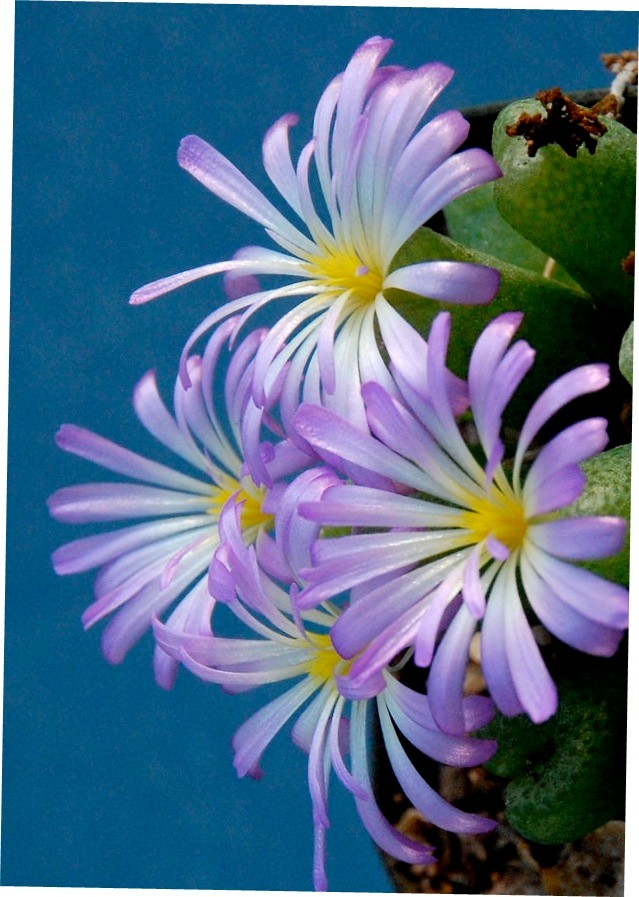Conophytum turrigerum
(Conophytum turrigerum)

Description
Conophytum is a genus of South African and Namibian succulent plants that belong to the family Aizoaceae. The name is derived from the Latin conus (cone) and Greek phytum (plant). The plants are also known as knopies (buttons), waterblasies (water blisters), sphaeroids, conos, cone plants, dumplings, or button plants. The genus is sometimes wrongly referred to as Conophyton, the name that Adrian Hardy Haworth suggested in 1821: "If this section proves to be a genus, the name of Conophyton would be apt". However, this was too tentative to establish a validly published generic name and also, Haworth himself neither adopted it nor accepted the genus. The genus was neither recognised nor validly named until the name Conophytum was published 101 years later. Conophytum species are dwarf cushion-forming or single-bodied succulents. Members of the genus are tiny plants with succulent leaves ranging from 1/4" to 2" in length. These leaves are partially or entirely fused along their centers. Each leaf pair (together referred to as a body) ranges in shape from "bilobed" to spherical to ovoid to tubular to conical. Some species have epidermal windows on the top of their leaves. To the naked eye the epidermis ranges from very smooth to slightly rough to hairy, depending on the microscopic epidermal cell shape and structure. In their normal, natural state each stem has only one pair of leaves at a time though one plant may have dozens of stems and thus dozens of leaf pairs. When very heavy rains come to their native habitat they may grow luxuriantly and develop two leaf pairs per stem simultaneously; this is called "stacking up" of the leaves.
Taxonomic tree:







